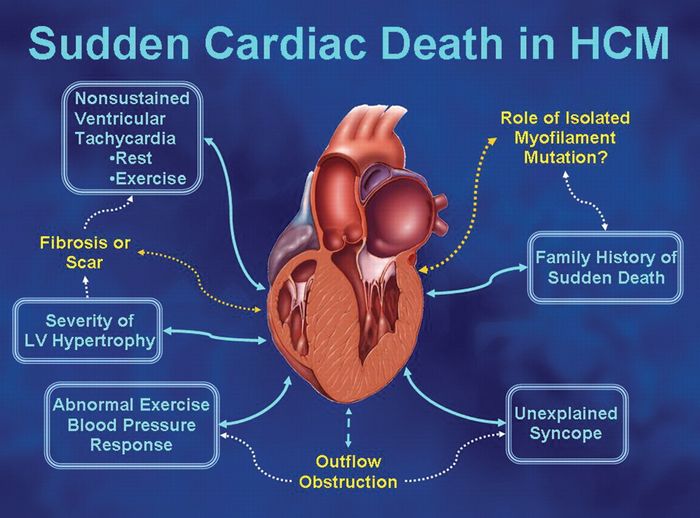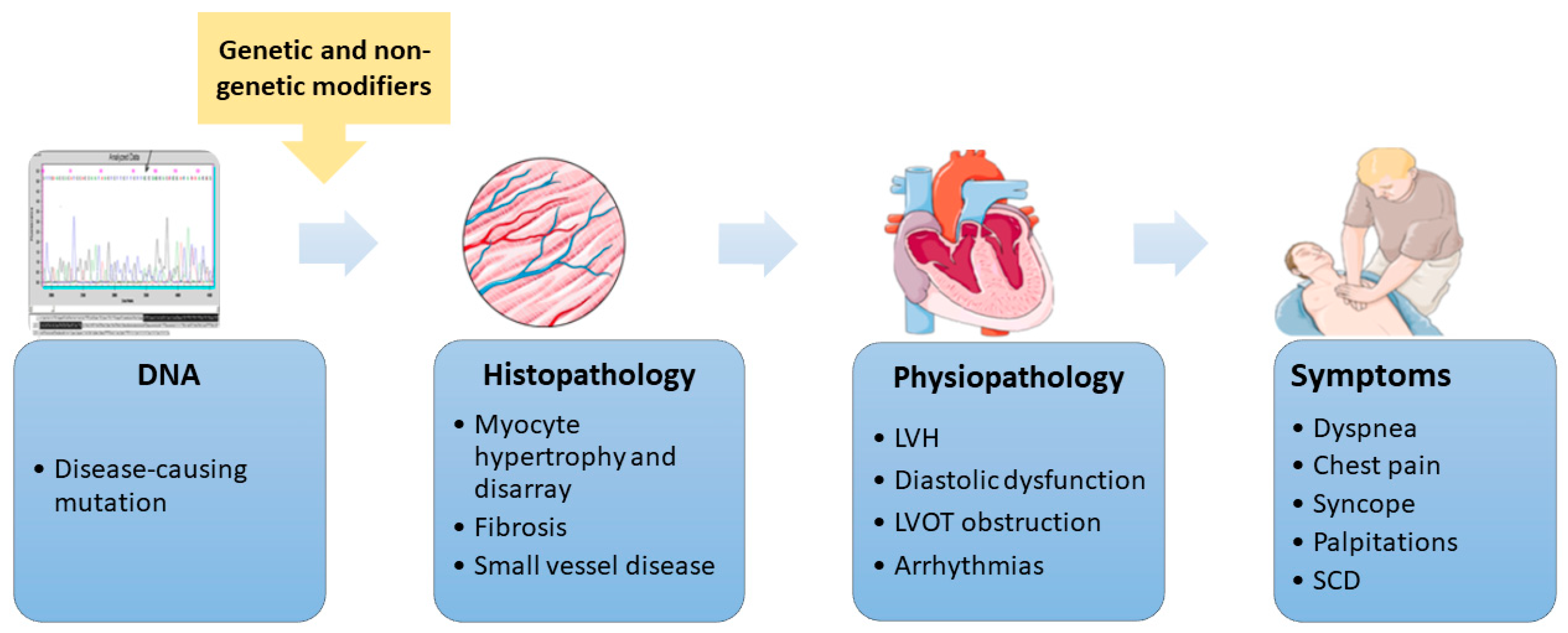Which of the Following Best Describes Hypertrophic Cardiomyopathy
Abnormal thickening of the left ventricle wall. Which of the following best describes hypertrophic cardiomyopathy.

A Stem Cell Model Of Hypertrophic Cardiomyopathy Cardiology
Enlargement of a part of the ventricle results in abnormal diastolic filling and impaired systolic function A patient reports chest pain and fainting while on a class hiking trip.

. Systolic diastolic dysfunction. Cleveland Clinic is a non-profit academic medical center. Poor ventricular filling and weakened myocardium OC.
The correct answer is B The most common heart disease is hypertrophic cardiomyopathy HCM. He denies any chest pain. Hypertrophic cardiomyopathy occurs if heart muscle cells enlarge and cause the.
Hypertrophic cardiomyopathy HCM is very common and can affect people of any age. The problem with HCM is the development of clots in the. It is a common cause of sudden cardiac arrest in young people including young athletes.
Hypertrophic cardiomyopathy HCM is a disease in which the heart muscle becomes abnormally thick hypertrophied. It affects men and women equally. Hypertrophic cardiomyopathy HCM is very common and can affect people of any age.
The following are key points to remember from this state-of-the-art review on the diagnosis and evaluation of hypertrophic cardiomyopathy HCM. The thickened heart muscle can make it harder for the heart to pump blood. This reduces the amount of blood taken in and pumped out to the body with each heartbeat.
Ubiquitous pathophysiologic abnormality in HCM is diastolic dysfunction characterized by increased stiffness of hypertrophied muscle. Hypertrophic cardiomyopathy is most often caused by abnormal genes in the heart muscle. Learn vocabulary terms and more with flashcards games and other study tools.
Hypertrophic cardiomyopathy has a diastolic dysfunction. Shown electrocardiogram suggests left ventricular hypertrophy. It is usually a genetic cause.
It is caused by thickening of the heart muscles in the left ventricle and septum most common septum. On echocardiography one would expect that this patients left ventricle would demonstrate. This increases the size of the heart muscle hence the label hypertrophy.
The thickened walls become stiff. A weakened and enlarged myocardium b. HCM has a prevalence of 12001500.
Which of the following statements best describes the normal conduction of electrical impulses through the AV node. Hypertrophic Cardiomyopathy is an autosomal dominant disease which leads to severe ventricular hypertrophy and poor diastolic filling. Hypertrophic cardiomyopathy HCM is a heritable autosomal dominant disorder of structural abnormalities confined to the heart.
Restrictive cardiomyopathy RCM is a heart-muscle disease characterized by stiffness of the ventricular walls leading to diastolic dysfunction raised end-diastolic pressure and dilated atria. Enlarged left ventricle and septum a. The flow of blood through the heart has decreased so that the blood moves through more difficultly.
These genes cause the walls of the heart chamber left ventricle to contract harder and become thicker than normal. Thickening of your heart muscle especially the ventricles or lower heart chambers. Hypertrophic cardiomyopathy is one of them.
None of the above. Hypertrophic cardiomyopathy is characterized by. Enlarged left ventricle and septum.
The obstructive variant of HCM is hypertrophic obstructive cardiomyopathy HOCM also historically known as idiopathic hypertrophic subaortic stenosis IHSS or asymmetric septal hypertrophy ASH. Start studying Hypertrophic Cardiomyopathy. A weakened and enlarged myocardium b.
Which best describes the pathophysiology of hypertrophic cardiomyopathy. The prevalence of asymptomatic HCM is between one in 500 and one in. It is crucial for every medical physician to recognize patients who are at risk of sudden cardiac death due to their underlying medical condition.
Question 6 1 out of 1 points Which of the following best describes hypertrophic cardiomyopathy. She is noted to have hypertension with BP in the 15094 range. Which of the following best describes hypertrophic cardiomyopathy.
It is a treatable disease that can be associated with normal longevity. Shown electrocardiogram suggests left ventricular hypertrophy. However only a minority are clinically diagnosed.
This results in elevated diastolic filling pressures is present despite of a hyperdynamic left ventricle. True - the hypertrophied ventricle is not able to relax normally in diastole much higher LV end diastolic pressure -- ultimately leads to increase in pulmonary capillary wedge pressure. None of the above.
Acute rheumatic fever is an inflammatory disease which can follow infection with. Another non-obstructive variant of HCM is apical hypertrophic cardiomyopathy AHC also called Yamaguchi syndrome. A 21 year old college student presents to the student health center with a copious markedly purulent discharge from the left eye.
Enlarged left ventricle and septum d. Myocarditis is characterized by infiltration of inflammatory cells into the myocardium leading to an abnormally enlarged. Hypertrophic cardiomyopathy HCM is a complex type of heart disease that affects your heart muscle.
Poor ventricular filling and weakened myocardium c. Hypertrophic cardiomyopathy with outflow tract obstruction. Change in function and impact of symptoms.
Hypertrophic cardiomyopathy HCM is the most common inherited cardiomyopathy due to mutations in numerous genes. Which of the following best describes hypertrophic cardiomyopathy. QUESTION 12 Which of the following is not a risk factor for coronary arterial insufficiency a.
Xanthines QUESTION 10 Which of the following best describes hypertrophic cardiomyopathy a.

Sport Practice In Hypertrophic Cardiomyopathy Running To Stand Still International Journal Of Cardiology

Different Types Of Hypertrophic Cardiomyopathy Hcm Amyloid Disease Download Scientific Diagram

Medicina Free Full Text Exploring The Continuum Of Hypertrophic Cardiomyopathy From Dna To Clinical Expression Html
:max_bytes(150000):strip_icc()/GettyImages-974257122-84c7a52082244f08a59c635f64d4eb34.jpg)
Comments
Post a Comment